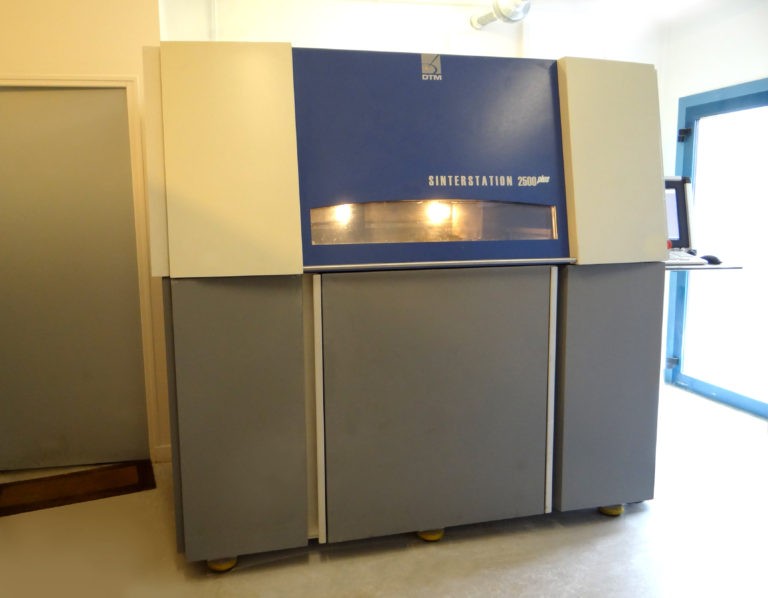Powder sintering: characteristic of the new
Axis has just acquired a new machine for Powder sintering. This is the DTM “Sinterstation 2 500 Plus”!
For the moment, it can produce parts in PA 12 or glass-filled PA, like the machine(HQ Sinterstation) already in our possession.
Its capacity is 350 x 300 x 420 mm (the same as its predecessor), as both machines have been overhauled with new heating systems for optimum production.
The DTM Sintersation 2500 Plus is ready to 3D print your prototypes and models.
See for yourself!

Powder sintering: How does it work?
Like Stereolithography, Powder Sintering is a process for producing prototypes by additive manufacturing. The principle of this technology is to polymerize polyamide powder, among other things, to solidify it in successive layers of 0.10 mm using a 3D file or digitized model.
Construction of the powder sintered part begins with the platform flush with the machine’s construction surface. A layer of powder is applied with a roller. Once closed, it heats up to reach a certain temperature in the interior. Once this temperature has been reached, the laser is activated, passes through the lens and follows the trajectory calculated by the control computer to trace the contours of the part. On contact with the laser, the powder becomes compact and welded, as the heat is increased at this precise point to reach the melting point and sinter the material. The platform of the powder sintering machine is lowered by 0.10 mm, then a new layer of material is deposited on top. The various stages then follow one another. After all the successive layers have been produced, the temperature in the passenger compartment drops, and the entire production run can be accessed. Then, like archeological digs, with brushes and tools we come to collect the prototypes produced. The parts are then de-soldered, sandblasted, etc. to remove any excess powder still present.
